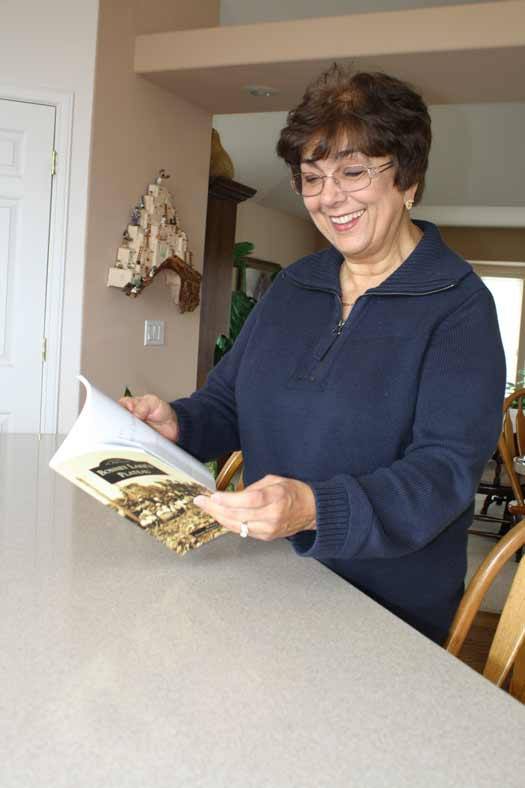Looking out the back window of her home in Bonney Lake, Winona Jacobsen can see where it all began for the city: the Kelley Farm, the oldest residential home in the area.
It is a picturesque view and includes Fennel Creek, named for one of the first pioneers, Reuben Finnell, whose arrival pre-dates even the Kelleys.
She could envision the land and the settlements as it looked more than 100 years ago.
It was a desire to preserve the valley and the creek that got Jacobsen interested in the Greater Bonney Lake Historical Society and introduced her to the very beginnings of the city that would eventually grow on the western edge of the plateau.
Jacobsen learned there was more history on the Plateau than most people thought and wanted to share that with the world.
“That’s what inspired me,” Jacobsen said of the creek.
Now, residents wanting to see what the old days in Bonney Lake were like have to look no further than a new book of photographs put together by Jacobsen for Arcadia Press’s “Images of America” series, which will release “Bonney Lake’s Plateau” this month.
It is Jacobsen’s first book and contains more than 200 images of the Bonney Lake region, stretching from the earliest settlers to members of the current city council.
Divided into chapters like “Early Plateau” and “Kelley Legacy” and stretching through “Lake Tapps Reservoir,” “Plateau Migration” and “A Town is Created,” the photos tell the story of Bonney Lake, a tale that stretches back well before the 1949 date of the city’s official incorporation.
“The things that occurred up here pre-date things that occurred in the surrounding communities,” Jacobsen said. “We didn’t have a town, but we did have things going on here that were important to the territory of Washington at the time.”
To create the book, Jacobsen collected more than 500 photos of the area, mostly from private collections and residents who told her tales of their days growing up on the Plateau before the city grew to its current size, though the majority of the pictures did not make the final edit of the book.
“Since these are from private collections, they are mostly just snapshots and the quality just isn’t there (for publication),” she said.
The creation of Lake Tapps, a reservoir built in 1910 to store water for Puget Sound Electric, was one of the most significant developments of the region and is cataloged in photographs from the University of Washington’s Special Collections.
“Lake Tapps is an incredible engineering feat,” she said.
Jacobsen said her research revealed an “amazing” amount of trees taken out of the area that would become the lake. According to Jacobsen, enough lumber was taken from Lake Tapps to build a five foot-wide sidewalk stretching from Seattle to New York City, more than 3,000 miles.
After Washington became a state and the area began to grow, Jacobsen said, the valley settled more quickly while the hill remained wilderness, primarily due to the difficulty in getting up the hill before state Route 410 was built.
“The road was terrible coming up the hill,” she said, adding that people would leave their cabins in the the fall and spend their winters in the valley before heading back up to the Plateau for the summer.
In the 1940s, Jacobsen said the city’s first mayor, Ken Simmons, bought acreage around Lake Bonney but could not sell it for development because there was no water system. The city needed to incorporate to pass a bond to install a water system.
And so, the city was born.
As Bonney Lake continues to grow at one of the fastest rates in the county, it is difficult to imagine the dense wilderness that once dominated the area, but Jacobsen said she hopes the book will remind everyone that there is more to Bonney Lake than previously considered and will hopefully help guide development and planning in the future.
“Let’s step back and think about it before we say ‘sure, cut it down and start building,'” Jacobsen said. “Yeah, there is something here worth saving.”
All proceeds from the book go the Greater Bonney Lake Historical Society. “Bonney Lake’s PLateau” will officially be released May 16. To reserve your copy,send a $21.99 check to GBLHS, P.O. Box 7635, Bonney Lake, WA 98391.



